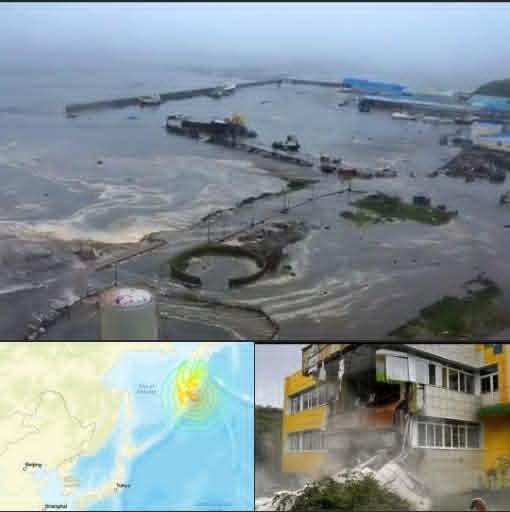Asia is facing one of the most severe emergencies in recent memory after a massive 7.7-magnitude earthquake struck in the early hours of Monday morning, leaving destruction and despair across several countries. The violent tremors tore through large parts of southern China, northern Thailand, and Myanmar, shaking millions of people awake and plunging entire communities into chaos.
According to the U.S. Geological Survey (USGS), the quake’s epicenter was located in a remote mountainous region along the China-Myanmar border, a geologically fragile area known for its seismic activity. The earthquake struck with terrifying force at 3:42 a.m. local time, a moment when most residents were asleep, making it even more deadly. With a shallow depth of only 10 kilometers, the energy released caused maximum surface destruction, leveling homes, cracking roads, and toppling buildings within seconds.
The Immediate Impact
Preliminary reports are grim. Dozens of people have been confirmed dead, and the number is expected to rise as search-and-rescue operations continue. Hundreds more are injured, many in critical condition, while countless others remain trapped beneath collapsed structures, desperately awaiting help. In some villages close to the epicenter, entire blocks of homes and markets have been reduced to rubble. Families are frantically searching for loved ones, often with their bare hands, as emergency crews struggle to reach the worst-hit areas.
Rescue Operations Under Pressure
Rescue teams from across China, Myanmar, and Thailand have been dispatched, but progress is painfully slow. Blocked roads, landslides, and ongoing aftershocks are hindering operations. Communication lines are down in several rural areas, leaving many communities cut off from the outside world. Emergency workers are using helicopters, drones, and dogs to locate survivors, but the scale of the devastation is overwhelming.
In northern Thailand, major cities such as Chiang Rai and Chiang Mai were hit hard, with high-rise buildings swaying dangerously and people rushing into the streets in panic. Authorities quickly ordered mass evacuations, fearing further collapses due to weakened infrastructure. Temporary shelters have been set up in stadiums and schools, where thousands of displaced residents are seeking safety and comfort.
Strain on Hospitals and Relief Efforts
Hospitals across the affected region are operating beyond capacity. Medical staff are working around the clock to treat head injuries, fractures, and trauma cases, often without enough supplies. Makeshift triage centers have been established outside hospitals, where doctors are performing emergency procedures under tents and open skies. Volunteers and aid organizations are delivering food, water, and blankets to survivors, but shortages are already being reported.
Governments of China, Myanmar, and Thailand have promised coordinated relief efforts. Military units have been mobilized to assist in clearing debris, distributing aid, and ensuring security in devastated areas. International organizations are also offering support, with the United Nations and Red Cross monitoring the situation closely and preparing humanitarian aid.
Fear of Aftershocks
Adding to the terror, powerful aftershocks continue to shake the region, rattling nerves and causing further structural damage. Authorities are warning residents not to return to weakened buildings, as even small tremors could trigger new collapses. Thousands of families are spending nights in open fields, braving the elements in fear of another major quake.
A Stark Reminder
This disaster is a devastating reminder of Asia’s vulnerability to natural calamities. With its dense populations, fragile infrastructure, and tectonic fault lines, the region remains at high risk of catastrophic earthquakes. Experts stress that this tragedy underscores the urgency of preparedness, resilience, and international cooperation, as no single nation can fully manage the impact of disasters of this magnitude alone.
As assessments continue, the true scale of the catastrophe is still emerging. For now, the region mourns its losses, prays for those still trapped, and rallies in a massive effort to save as many lives as possible.
